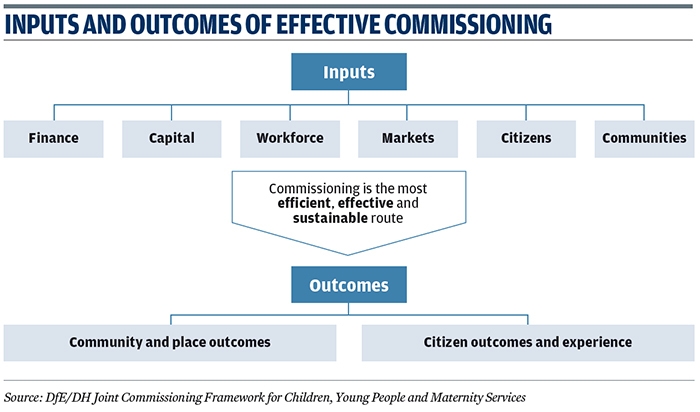The art of commissioning
Richard Selwyn
Monday, April 10, 2017
In the first of a series of articles, commissioner Richard Selwyn outlines the key principles of good children's services commissioning.

Welcome to a new monthly feature all about the art of commissioning. If you have found yourself becoming commissioning-curious, then don't hide it, dive on in. First up, everyone knows what commissioning is, so remind me again…
The History
The 1990s saw booming investment in the public sector - growth in the scope and size of provision (remember that?) and more government funding to the frontline. But politicians soon noticed that the outcomes that should come from this investment were small at best. At this point, we realised it wasn't just about the amount of money you throw at problems, but how we understand outcomes, change services and monitor performance that matters.
My personal involvement in commissioning began a little later with Ministry of Defence smart procurement and the Royal Navy. The principles translated well to children's services, informing the Department of Health/Department for Education Joint Planning and Commissioning Framework for Children, Young People and Maternity Services, which we wrote with 200 friends from across the sectors. The new framework was a complicated nine-step process, but helped to redefine commissioning as an art instead of a bureaucracy.
The next phase of government development was the commissioning cycle - suddenly everyone was an expert and an internet search reveals 33,000 pages and snazzy diagrams describing different cycles. Almost all of these diagrams boil down to a very simple business cycle model of: understand, plan, do and review. This is what I should have started with in the Department for Education. Of course, life is a bit more complicated than that, and we began to see that what we were describing in commissioning cycles and frameworks looked a lot like systems thinking. And this is where good commissioning really starts to take off.

Systems
In a nutshell, commissioning is about getting the outcomes from the resources in the most efficient, effective and sustainable way.
At this definition, commissioning moves well away from the process and bureaucracy - we want to know how outcomes are interrelated, how parents and the child's environment have a bigger impact than any of our services, and how we measure success if it is subjective. We have many resources to play with, such as money, the family and community, workforce, capital, knowledge and influence. And there's a whole package of things we can do to get the outcomes from the resources - much more than just procurement and traditional children's services.
In fact, much of children's services development continues to be characterised by applying systems thinking to delivery. For example, Signs of Safety interventions to work in co-production with the family. Or community resilience to reduce the need for statutory interventions. And integration through health alliances or multi-agency teams.
Art
So good commissioning turns into an art: about balancing all the competing demands, about innovating to support more children and young people, about aligning incentives between users and providers. We need to understand the system, how to co-design services, and co-produce outcomes with professionals. And commissioners have to be entrepreneurial in the face of austerity, tenacious in fighting for better lives for the vulnerable, and perhaps just a little bit inspiring.
Process for joint planning and commissioning
- Look at outcomes for children and young people
- Look at groups of children and young people
- Develop needs assessment with user and staff views
- Identify resources and set priorities
- Plan pattern of services and focus on prevention
- Decide how to commission services efficiently
- Commission - including use of pooled resources
- Plan for workforce and market development
- Monitor and review services and process
Source: Outcomes and Efficiency: Leadership Handbook
Richard Selwyn is a member of the Association of Directors of Children's Services resources and sustainability policy committee
@rjselwyn




